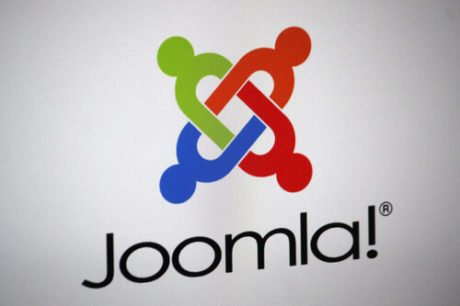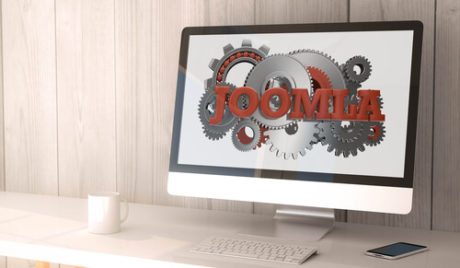 A decade ago, having a web page was cool. Today, not having a web page is almost primitive. Through a blog or a wiki or a web page, everyone these days is present on the web, one way or the other. There are websites on gossip, websites on politics and websites on sports and so on. Why there are websites on websites as well! Does that mean everyone who wants to be on the web has to be a geek? No. All you need is a Content Management System.
A decade ago, having a web page was cool. Today, not having a web page is almost primitive. Through a blog or a wiki or a web page, everyone these days is present on the web, one way or the other. There are websites on gossip, websites on politics and websites on sports and so on. Why there are websites on websites as well! Does that mean everyone who wants to be on the web has to be a geek? No. All you need is a Content Management System.
Wait, did I mention CMS? Well, not any CMS would do. What you need is Joomla!. It’s a revolutionary open-source system that is just as cool to work with as it sounds. If you have a webpage that needs some working on all the time, Joomla! is your best friend. Download it and forget about coding, programming, designing. Sit back and let Joomla! do all the hard work. Be it updating your design template or setting up a forum on your website, you can do it all through a browser-based interface. Joomla! is easy to set up and operate. It also provides a demo for various extensions helping you understand the software better.
In this book, I have tried to pack in as much information as I could about Joomla! and the wonders it can work for you. Read on and explore more.
How it all began
Joomla! is a one-of-its-kind freely available, open source Content Management System that launched its first version of Content Management System on September 16, 2005. The idea was conceived during the Mambo Project, commissioned by Miro Corporation, Australia. The team of core developers quit the project owing to ‘ethical’ differences in August 2005. They went on to create Joomla!, a word that means ‘all together’. At the risk of sounding clichéd, the rest was history. Today, Joomla! is a pet project for thousands of developers and community members. Not to mention the thousands of end-users across the world.
Joomla! Versions
Joomla! follows a three-tier pattern in releasing its versions. It releases its versions in three categories – Major, Minor and Maintenance, each of which consists of three numbers.
Major – it is symbolised as x.1.1 where an upward movement in the major number (here x) refers to a drastic change in the version compared to the previous major version. The change may be in terms of rework or rewriting of the code base.
Minor – it is symbolised by 1.x.1 where ‘x’ is the minor number. An increment upon that number shows a considerable change in architecture and functionality, giving rise to a new version. It may have some similarity with the previous modifications in Minor.
Maintenance – 1.1.x symbolises Maintenance. Any increment in the maintenance number ‘x’ means the addition of new features and/or improvements from the previous ones.
Some of the areas where Joomla! can be useful include – personal home pages, corporate websites, e-commerce, intranets and extranets, portals, newspapers and magazines, organisational websites, Government applications, and many more.
How has the market received it?
Joomla! was formed with the support of 1000 members who joined the core development team to form Joomla!. Today it is as large as more than 90,000 members in its community. Its global core team is located in 11 countries. The product itself has evolved and now supports 40 languages. End users, content writers, translators, developers, designers, systems administrators etc form the part of the Joomla! community.
Various working groups are also operational to take care of the growth and development of Joomla!, which was previously handled by the core team. These groups have a group leader who serves as a communication link between the group and/or community members and the core team. They are assigned tasks and responsibilities pertaining to a specific area of Joomla! Content Management System. These working groups deal with different aspects of Design and Accessibility, Development, Documentation, Quality and Testing, Site and Infrastructure and Translation to enhance Joomla!.
The Foundation Working Group looks after marketing and media, legal issues, events, funds, OSM etc.
Features
 Joomla! is packed with features that address multiple content management issues. It has basic functions like updating content on a web page as well as more advanced features like enabling RSS feeds or archiving a high volume of data. Some of the very basic features include.
Joomla! is packed with features that address multiple content management issues. It has basic functions like updating content on a web page as well as more advanced features like enabling RSS feeds or archiving a high volume of data. Some of the very basic features include.
- Articles
- Blogs
- Calendars
- Forums
- FAQs
- Image Library
- Language Internationalization
- Links
- Newsflashes/News
- Page Caching
- Polls and Surveys
- Printable page versions
- Web Indexing
- Site Search and more…
Plus, you have ready-to-use templates to design or modify your website. Layout preview allows you to have an idea of how the actual website will look using the template or any of the other features of Joomla! If you want to earn through website advertisements, there is a Banner Manager feature.
For all this, you just need to have a PHP pre-processor, MySQL database and a web server (preferably Apache, though Microsoft IIS is also acceptable).
Add-ons and Templates
Joomla! has a thriving community of developers who work towards adding value to the core CMS offering. Thus, Joomla! has several add-ons and templates to choose from. With frequent releases of new add-ons, Joomla! users never run out of options.
Joomla! Add-ons may take the form of commercial software as well as open source software that is aimed to enhance your website’s functionality. They may be the components or integrated solutions provided by third-party providers. However, there may be certain risks (legal or in terms of security) associated with using such third-party add-ons.
Generally Joomla! add-ons may be grouped into three main categories –
Joomla! Forums Joomla! Galleries Joomla! Blog
Joomla! Forums
Forums are no longer a fancy addition to the overall website. With the business environment dictating more customer interaction, forums have emerged as an important customer service tool. Forum members also look at it as a potential marketing tool for their own website/products/services. Adding forums on your website can make your website more interactive. It can bridge the gap between you and your customers, forum members or website visitors.
Joomla! provides you with multiple options to incorporate a forum, discussion boards or bulletin boards on your website. Joomla!-SMF, Joomla-phpBB, Joomla!-SimpleBoard and Joomla!-vBulletin are some of its components that may be required to integrate a forum to the website.
Joomla! Galleries
“A brand new Harley Davidson jacket up for sale at a 30% discount”.
When was the last time you saw a text ad like this and reached for your credit card? I know you’ve never done that and you never will. Why? Because you can’t see the product. How do you know what the jacket looks like? Now, imagine the same advertisement, replete with pictures on eBay. Would you react differently? That’s why the visual appeal is so important for the sale of a product. And it’s not just the visual appeal. If it’s an online music store, you may want to listen to a trial version before downloading an album. Similarly, you may want to see a short ‘how-to-use’ video before buying electronic equipment.
All those needs are addressed by Joomla! Galleries. They cover images, audio-visual files, pdf files and more. Joomla! Galleries offer various extensions which allow you to store, add, edit, delete and manage your online galleries. Each of Joomla! Gallery extensions, which are developed and set afloat by community members, may vary in their functionalities.
Joomla! Blog
Joomla! The blog helps users integrate a blog to their website. With this component, you can organise your blog content as per your preferences. It includes numerous useful features like RSS feeds, filter blog posts on certain criteria, dashboard, image browser, community builder integration, Joomla!Content Mambot Integration, etc.
There is much more you may add to the list of add-ons or components. Calendar, Comments, Guestbook, Hosting Customers, Redirect, ODT Indexer, YaNC (yet another newsletter component), Blocklist, etc.
Joomla! Templates
Joomla! Templates offer more design options for users who want to break the clutter with a unique looking site. There are a number of websites formed by the Joomla! Community or working group members (former or present) -developers, designers, technicians etc. These websites offer a range of readymade XHTML/CSS based web designs. All you need to do is choose one, download it and you have an attractive design for your website. You can also manage the text and graphic content on your site so as to gel with the template. Still not convinced? Check out the live demos to get a better idea of how your site would actually look in a particular template.
Joomla! templates fall into several categories. This includes Agriculture, Animals, Architecture, Business, Restaurant/Café, Hotels, Computers, Education, Books, Fashion, Entertainment, Food and Beverages, Church/ Religious Organizations, Law, Media, Online Casino, Science, Sports, Medical, Real Estate, Travel, Politics, Military, Society and Culture, family, personal, etc.
You may get these templates for free or at a nominal cost. But then, it’s worth the money when you know the kind of value it adds to your website.
Difference between Mambo and Joomla!
 As we have seen in the earlier section, Joomla! is the extended form of Mambo. The core development team of the Mambo project resigned from Miro Corporation, Australia in August 2005 and came up with a similar product Joomla! in September 2005.
As we have seen in the earlier section, Joomla! is the extended form of Mambo. The core development team of the Mambo project resigned from Miro Corporation, Australia in August 2005 and came up with a similar product Joomla! in September 2005.
Joomla! made its foray into this area with its first version Joomla! 1.0. It was a refined form of Mambo version 4.5.2.3 with certain additions like bug fixes and security patches. Joomla! 1.5, the latest version of Joomla! provides language internationalisation facility and uses the ‘ini’ format while Mambo 4.6 uses ‘get text’ format for translation files.
Add-ons, components, templates, modules, mambots etc. for Mambo 4.5.2 will also operate in Joomla! 1.0. It may also run on Joomla! 1.5. However, add-ons for Mambo 4.6 version may not work for Joomla! 1.5 and vice versa.
Some other additional features of Joomla! 1.5 include authentication models – LDAP, Gmail, etc., XML-RPC client-server support and also the support of UTF-8 character set.





-
Add a note